
1-2-3. days:
.jpg) Banks of the Danube and the Buda Castle Quarter & Andrássy Avenue
Banks of the Danube and the Buda Castle Quarter & Andrássy Avenue
This site has the remains of monuments such as the Roman city of Aquincum and the Gothic castle of Buda. It is one of the world's outstanding urban landscapes and illustrates the great periods in the history of the Hungarian capital.
Within the unified perspective of an immense urban panorama the Danube is the dividing line between two cities, which were quite separate originally: Buda on the spur on the right bank, and Pest in the plain on the left bank.
The Andrássy Avenue is the most elegant and most unified avenue of the booming metropolis of the XIXth century. From the view of architecture it is a summary of styles of the history: eclectic section, symbol of the City.
4. day:
.jpg) Tokaj Wine Region Historic Cultural Landscape
Tokaj Wine Region Historic Cultural Landscape
The cultural landscape of Tokaj graphically demonstrates the long tradition of wine production in this region of low hills and river valleys. The intricate pattern of vineyards, farms, villages and small towns, with their historic networks of deep wine cellars, illustrates every facet of the production of the famous Tokaj wines, the quality and management of which have been strictly regulated for nearly three centuries.
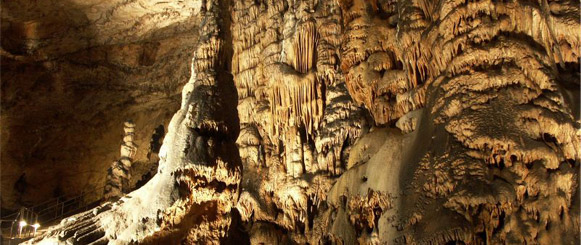 Caves of Aggtelek Karst: The variety of formations and the fact that they are concentrated in a restricted area means that the 712 caves currently identified make up a typical temperate-zone karstic system. Because they display an extremely rare combination of tropical and glacial climatic effects, they make it possible to study geological history over tens of millions of years.
Caves of Aggtelek Karst: The variety of formations and the fact that they are concentrated in a restricted area means that the 712 caves currently identified make up a typical temperate-zone karstic system. Because they display an extremely rare combination of tropical and glacial climatic effects, they make it possible to study geological history over tens of millions of years.
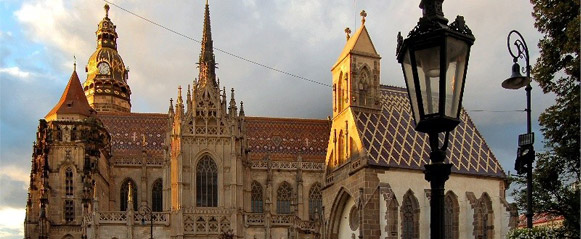 Kosice: Alongside with the unique ground-plane organisation, typical just for the region of the East Slovakia, the historical town core has got the preserved valuable compact set of buildings, including even medieval ones located in the centre of the town. It grew up on the crossroads of the long-distance merchant roads, connecting the East Europe with the West Europe and the Baltic with the Black Sea. Kosice is European Capital of Culture in 2013
Kosice: Alongside with the unique ground-plane organisation, typical just for the region of the East Slovakia, the historical town core has got the preserved valuable compact set of buildings, including even medieval ones located in the centre of the town. It grew up on the crossroads of the long-distance merchant roads, connecting the East Europe with the West Europe and the Baltic with the Black Sea. Kosice is European Capital of Culture in 2013
5. day:
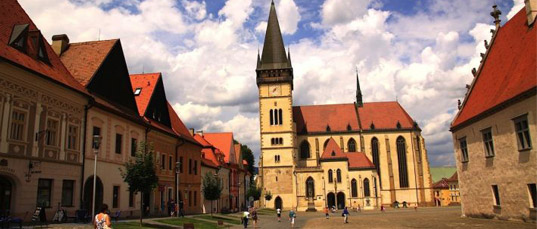 Bardejov
Bardejov
Bardejov is a small but exceptionally complete and well-preserved example of a fortified medieval town, which typifies the urbanisation in this region. Among other remarkable features, it also contains a small Jewish quarter around a fine 18th-century synagogue.
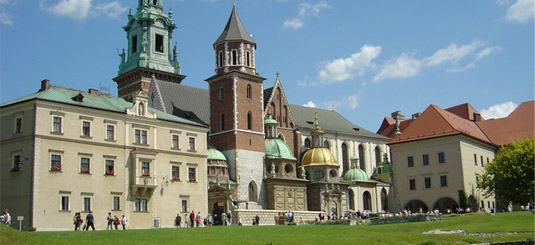 Cracow: The historic centre of Cracow, the former capital of Poland, is situated at the foot of the Royal Wawel Castle. The 13th-century merchants' town has Europe's largest market square and numerous historical houses, palaces and churches with their magnificent interiors.
Cracow: The historic centre of Cracow, the former capital of Poland, is situated at the foot of the Royal Wawel Castle. The 13th-century merchants' town has Europe's largest market square and numerous historical houses, palaces and churches with their magnificent interiors.
6. day:
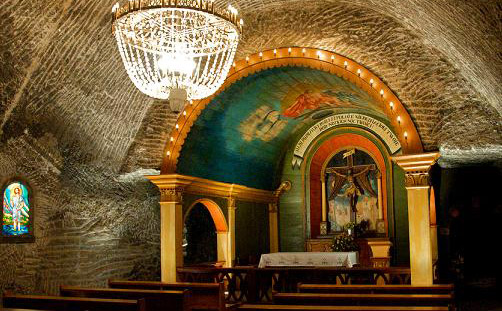 Wieliczka Salt Mine
Wieliczka Salt Mine
This deposit of rock salt in Wieliczka-Bochnia has been mined since the 13th century. Spread over nine levels, it has 300 km of galleries with works of art, altars, and statues sculpted in the salt, making a fascinating pilgrimage into the past of a major industrial undertaking.
7-8-9. days:
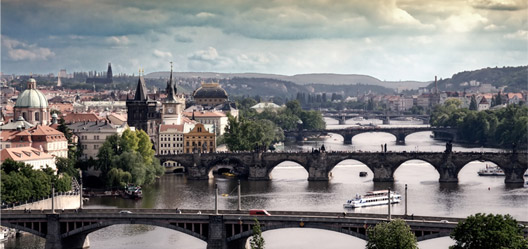 Prague
Prague
Built between the 11th and 18th centuries, the Old Town, the Lesser Town and the New Town speak of the great architectural and cultural influence enjoyed by this city since the Middle Ages. The many magnificent monuments, such as Hradcani Castle, St Vitus Cathedral, Charles Bridge and numerous churches and palaces, built mostly in the 14th century under the Holy Roman Emperor, Charles IV.
Prague is one of the most beautiful cities in Europe in terms of its setting on both banks of the Vltava River, its townscape of burger houses and palaces punctuated by towers, and its individual buildings.
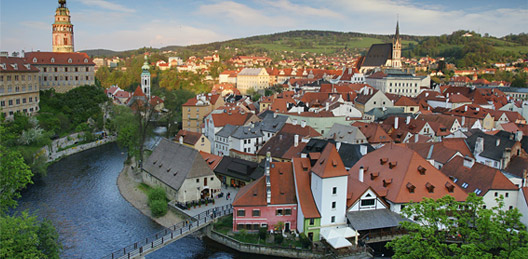 Cesky Krumlov: Situated on the banks of the Vltava river, the town was built around a 13th-century castle with Gothic, Renaissance and Baroque elements. It is an outstanding example of a small central European medieval town whose architectural heritage has remained intact thanks to its peaceful evolution over more than five centuries.
Cesky Krumlov: Situated on the banks of the Vltava river, the town was built around a 13th-century castle with Gothic, Renaissance and Baroque elements. It is an outstanding example of a small central European medieval town whose architectural heritage has remained intact thanks to its peaceful evolution over more than five centuries.
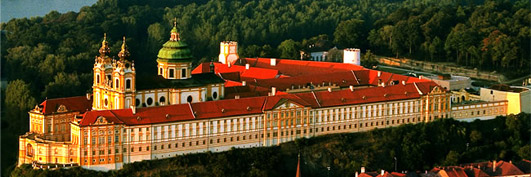 Wachau Cultural Landscape – incl. Abbey of Melk: The Wachau is a stretch of the Danube Valley between Melk and Krems, a landscape of high visual quality. It preserves in an intact and visible form many traces - in terms of architecture, (monasteries, castles, ruins), urban design, (towns and villages), and agricultural use, principally for the cultivation of vines - of its evolution since prehistoric times.
Wachau Cultural Landscape – incl. Abbey of Melk: The Wachau is a stretch of the Danube Valley between Melk and Krems, a landscape of high visual quality. It preserves in an intact and visible form many traces - in terms of architecture, (monasteries, castles, ruins), urban design, (towns and villages), and agricultural use, principally for the cultivation of vines - of its evolution since prehistoric times.
10-11-12. days:
.jpg) Vienna
Vienna
Vienna developed from early Celtic and Roman settlements into a Medieval and Baroque city, the capital of the Austro-Hungarian Empire. It played an essential role as a leading European music centre, from the great age of Viennese Classicism through the early part of the 20th century. The historic centre of Vienna is rich in architectural ensembles, including Baroque castles and gardens, as well as the late-19th-century Ringstrasse lined with grand buildings, monuments and parks.
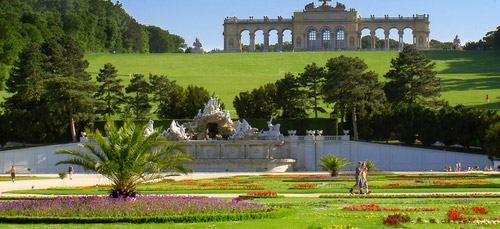 Palace and Gardens of Schönbrunn From the 18th century to 1918, Schönbrunn was the residence of the Habsburg emperors. It was designed by the architects Johann Bernhard Fischer von Erlach and Nicolaus Pacassi and is full of outstanding examples of decorative art. Together with its gardens, the site of the world’s first zoo in 1752, it is a remarkable Baroque ensemble and a perfect example of Gesamtkunstwerk.
Palace and Gardens of Schönbrunn From the 18th century to 1918, Schönbrunn was the residence of the Habsburg emperors. It was designed by the architects Johann Bernhard Fischer von Erlach and Nicolaus Pacassi and is full of outstanding examples of decorative art. Together with its gardens, the site of the world’s first zoo in 1752, it is a remarkable Baroque ensemble and a perfect example of Gesamtkunstwerk.
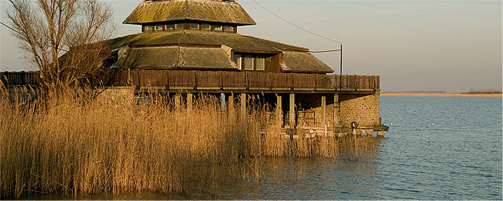 Fertő/Neusiedler Lake The Fertő/Neusiedler Lake area has been the meeting place of different cultures for eight millennia. This is graphically demonstrated by its varied landscape, the result of an evolutionary symbiosis between human activity and the physical environment. The remarkable rural architecture of the villages surrounding the lake and several 18th- and 19th-century palaces adds to the area’s considerable cultural interest.
Fertő/Neusiedler Lake The Fertő/Neusiedler Lake area has been the meeting place of different cultures for eight millennia. This is graphically demonstrated by its varied landscape, the result of an evolutionary symbiosis between human activity and the physical environment. The remarkable rural architecture of the villages surrounding the lake and several 18th- and 19th-century palaces adds to the area’s considerable cultural interest.

